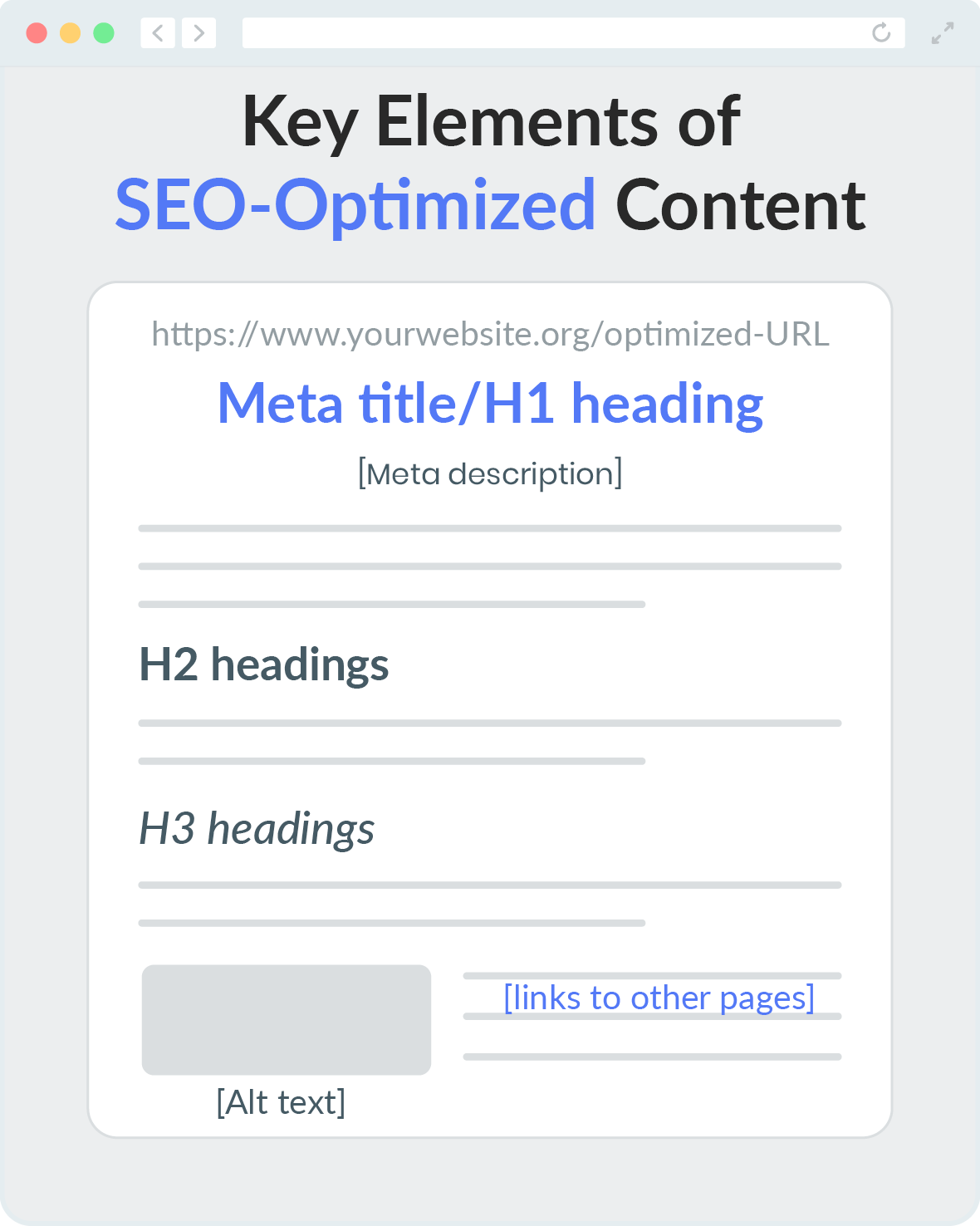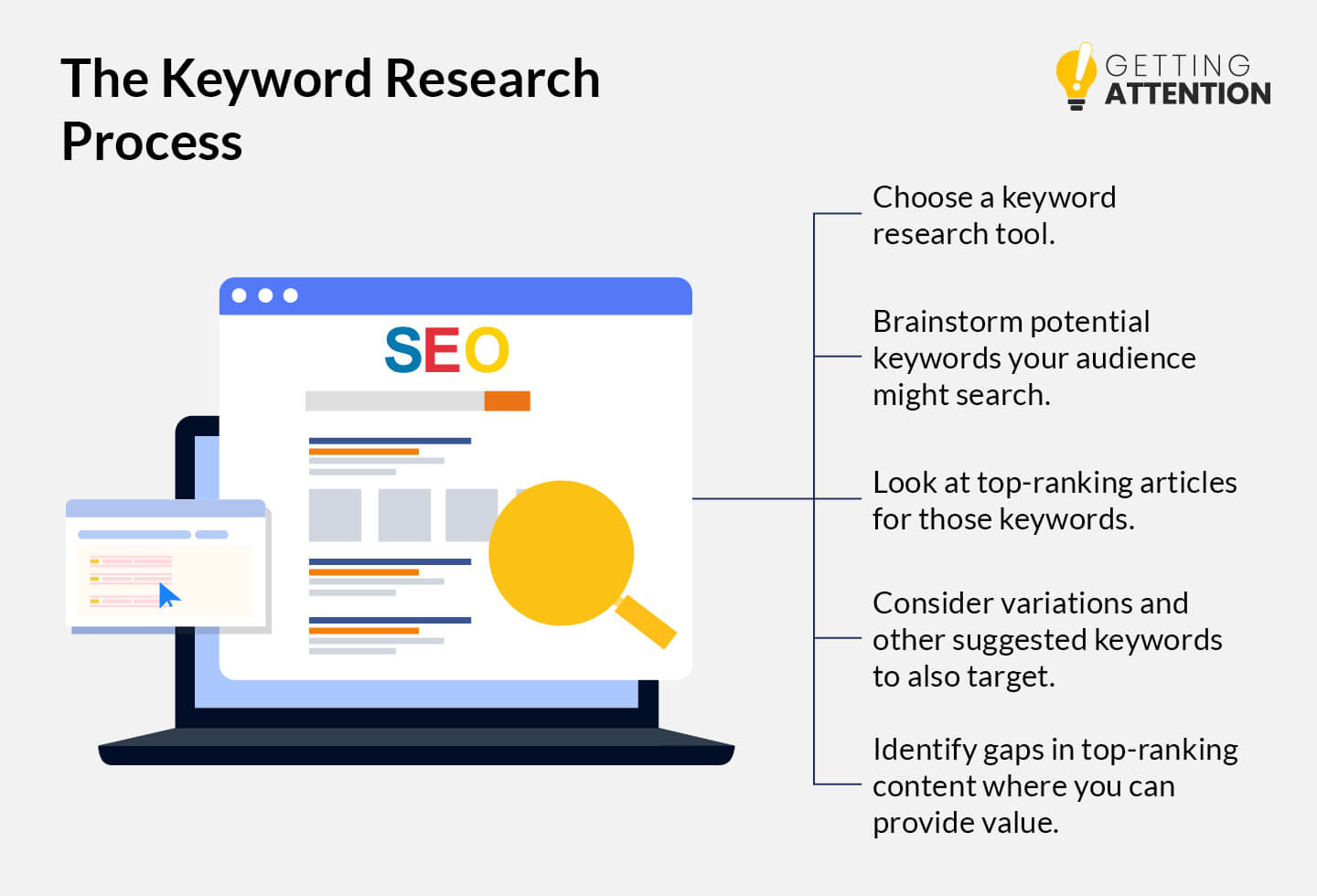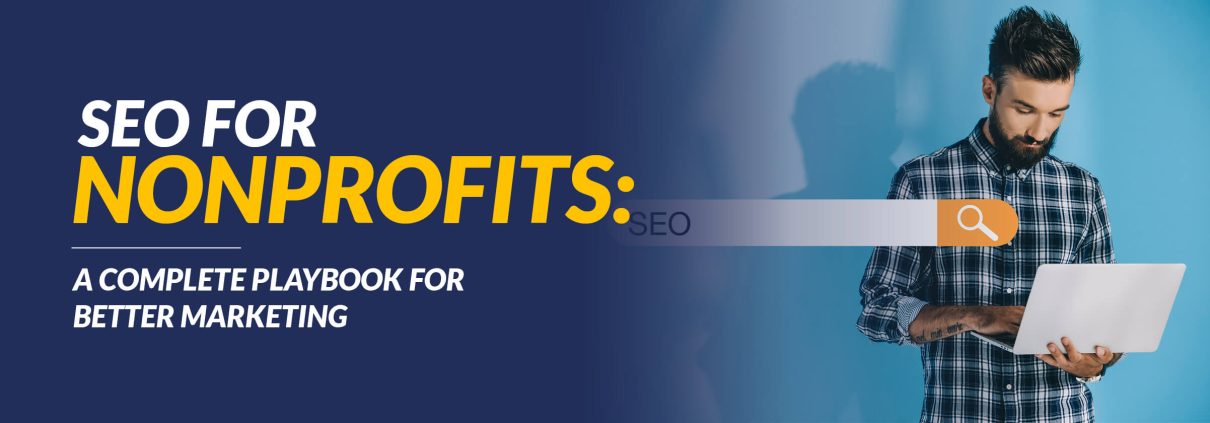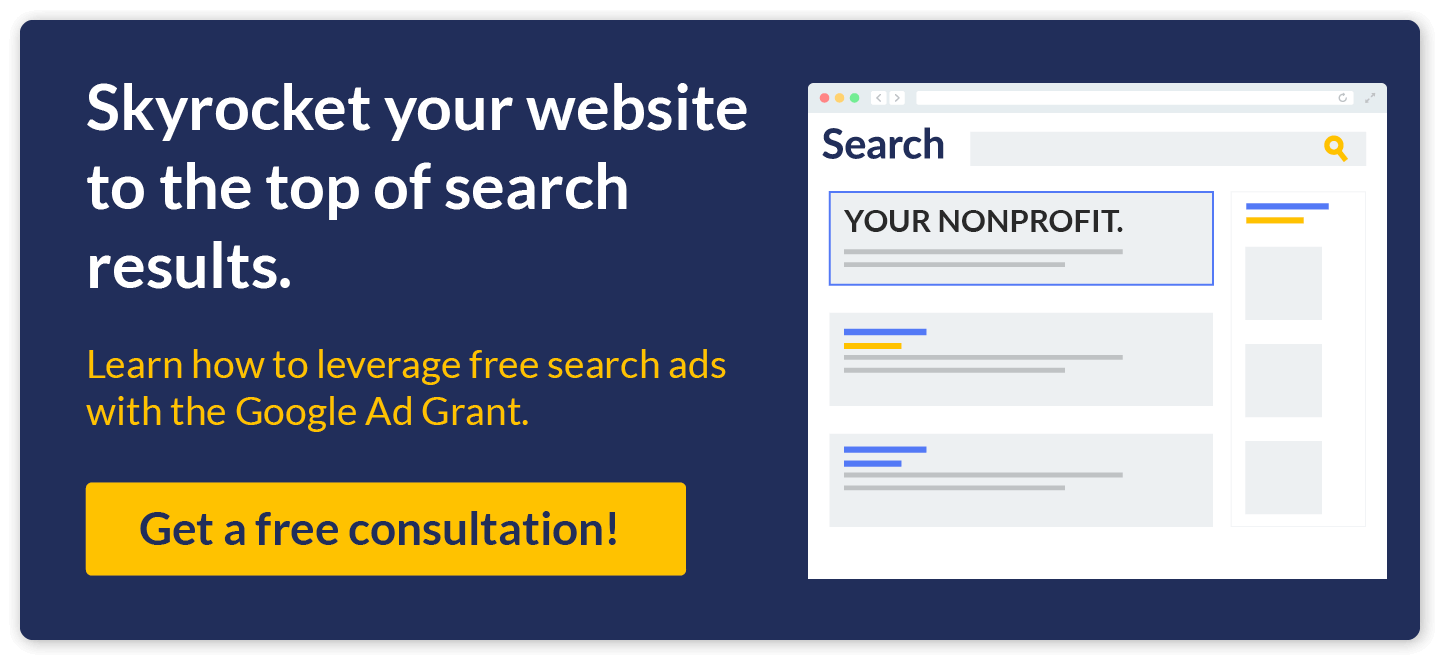SEO for Nonprofits: A Complete Playbook for Better Marketing
Imagine your nonprofit’s website as a hub of activity, drawing in supporters from all corners of the internet, each visit translating to real-world impact. By understanding SEO for nonprofits, you can make this vision a reality.
SEO not only elevates your website’s visibility on search engines, but it also drives targeted traffic and fuels your nonprofit’s ability to fulfill its mission. That means more donations, additional volunteers, and greater awareness for your cause.
This complete playbook is designed to empower nonprofit marketers with the knowledge needed to create a user-friendly website that’s designed to improve search engine results. We’ll cover these components:
- What Is SEO for Nonprofits?
- Core SEO Elements for Nonprofit Websites
- How To Conduct Nonprofit Keyword Research
- Practical SEO Strategies for Nonprofits
- How To Integrate SEO With Search Advertising
Whether you’re a seasoned marketer or new to the digital landscape, our guide will help you harness the power of SEO, transforming it into a key piece of your marketing strategy.
What Is SEO for Nonprofits?
Search engines constantly crawl the internet to index websites and deliver relevant search results to users based on their queries. Search engine optimization (SEO) for nonprofits is the strategic process of improving your organization’s website and its content to improve its ranking on search engine results pages (SERPs). When your content is optimized, it will be delivered to users who search for relevant terms, occasionally below paid advertisements.

SEO involves several techniques, such as keyword research, content creation, backlink building, and technical improvements. The goal of SEO is to increase organic traffic, raise awareness of your nonprofit’s mission, drive donations, earn sales leads, and enhance your organization’s overall impact.
Why Does SEO Matter For Charities?
Search engines are one of the main ways supporters find your nonprofit and get involved in your cause. By optimizing your website for search engines, you’ll make it easier for potential supporters to find your organization.
Beyond increased visibility, there are plenty of other benefits to optimizing your website, such as:
- Cost-Effective Marketing: SEO can be cost-effective when compared to paid ads due to providing continous traffic without a pay-per-click model. However, some organizations outsource work to nonprofit SEO agencies to reduce their workloads and get expert insights to enhance results.
- Qualified Traffic: With ample keyword research, your website can appear for relevant searches and connect with valuable leads searching for the services, products, and information your nonprofit offers.
- All-Around Better Websites: SEO practices often lead to well-structured and user-friendly websites. You’ll take steps like making your site usable on all devices, quickening site speed, and creating content your audience finds valuable.
- Long-Term Growth: Your nonprofit can establish a sustainable online presence and continue to grow over time thanks to SEO. Once you’ve created your content, ongoing optimization and regular updates will ensure that your website continues to attract and engage supporters, driving long-term success for your mission.
44% of nonprofit site visits come from organic traffic, making SEO a valuable marketing strategy for nonprofits. However, only 37% of organizations have dedicated SEO strategies.
Core SEO Elements for Nonprofit Websites
While Google doesn’t outright list its ranking factors, SEO marketers have made inferences as to what Google and other search engines use to deliver results to users.
Based on this research, there are different types of SEO for nonprofits to effectively reach and engage their audiences. Terms like “on-page SEO” and “technical SEO” refer to specific groups of optimization strategies and elements. Let’s explore these groups and their components in detail to help you fully understand how they influence your nonprofit’s search engine rankings.
On-Page Nonprofit SEO Elements
On-page SEO involves improving individual web pages, ensuring your content is both user-friendly and search engine-friendly. Here are some on-page SEO elements you can easily control:

- Title Tags: This is the HTML element that specifies the title of a web page and is displayed on SERPs as the clickable headline. Keep your page titles between 50 to 60 characters to ensure they’re effective without being truncated within search results.
- Meta Descriptions: Think of these as brief summaries of a web page’s content, shown under the title tag in search results. Create engaging meta descriptions to increase click-through rates, and keep them below 160 characters to avoid search engines truncating them.
- Header Tags (H1, H2, H3, etc.): These HTML elements define headings and subheadings, helping to structure content and make it more readable. Your H1 should be your page title, H2s should indicate sections, and H3s and H4s can further structure longer content.
- URL Structure: The format of web page URLs should be clean, descriptive, and include relevant keywords. For instance, if your blog post’s keyword is “environmental conservation tips,” you would make your permalink /environmental-conservation-tips/. Here’s a breakdown of an effective URL structure:

- Keywords: These are the terms your content is designed to target. Strategically and naturally place relevant keywords throughout your content’s headings, image alt text, and copy.
- Content Quality: Create high-quality, original, and valuable content that addresses the needs and interests of your target audience for each page.
- Linking: Links within your content connect it to related content, helping search engines understand the site structure and improving user navigation. You can also link to authoritative external sources to improve your content’s credibility.
- Images: Images enhance your content and make it more visually engaging. Using tools like TinyPNG or Optimizilla, compress your images to ensure they load quickly. Also, use image alt text that’s descriptive to improve user accessibility and help search engines understand what your image is.
You can check on-page SEO elements for your nonprofit with tools like Moz Pro. This SEO platform and other similar ones provide a helpful On-Page Grader tool to evaluate individual pages on your website, providing detailed analysis of keyword usage, your meta description, and other critical elements.
Off-Page Nonprofit SEO Elements
Off-page SEO involves activities conducted outside of your website to improve its visibility and authority. Common off-page nonprofit SEO activities include:
- Link building: Building backlinks from high-quality external websites indicates that others trust you, improving your site’s credibility. You can wait for others to organically link to you, or engage in practices like guest blogging on other websites, reaching out to corporate partners, and partnering with other nonprofits to link to your organization’s content.
- Content marketing: Sharing your content on various platforms helps reach a larger audience, drive traffic, and can result in more backlinks and mentions.
- Online reviews: Positive reviews on platforms like Google My Business, Yelp, or social media platforms like Facebook can improve your site’s authority and trustworthiness. Encourage people who volunteer or benefit from your nonprofit’s services to leave reviews, signaling to Google that your site is trustworthy.
Essentially, off-page SEO aims to enhance your site’s authority, trustworthiness, and relevance in the eyes of search engines by leveraging external factors. It’s just as important to your nonprofit’s SEO strategy as on-page optimizations.
Technical SEO Elements For Nonprofits
Technical SEO requires making it easy for users and search engines to navigate your website. You’ll want to improve your site’s infrastructure, ensuring that search engines can crawl, index, and render the site efficiently.
Technical SEO lays the foundation for other nonprofit SEO efforts, so enhance these technical aspects of your site:
- Site Speed: Faster load times improve the user experience. In fact, pages that take under two seconds to load have an average bounce rate of 9% while pages that take five seconds have an average bounce rate of 38%. Compress images to reduce file sizes and leverage browser caching to store frequently accessed files in the user’s browser to speed up page loading on subsequent visits.
- Website Security: Implement HTTPS to encrypt data and ensure secure communication between the user’s browser and the web server. You’ll also want to protect your website from security vulnerabilities by keeping your CMS updated and enforcing strong password policies for anyone with internet access. Our guide to Google Ad Grant requirements for websites walks through some easy ways to enhance site security.
- Mobile Usability: Ensure that your website’s layout adjusts automatically to fit users’ screens and that content is easily readable on mobile devices. This is especially important considering half of all nonprofit website traffic comes from mobile devices.
- 404 Errors and Redirects: Identify and fix broken links that lead to 404 error pages (AKA removed pages). Implement 301 redirects when content is deleted or has a URL change. This passes on link equity to the new URL.
- Crawlability: Use your robots.txt file to tell crawlers which pages or section of your site should not be crawled or indexed. Be sure to include your sitemap in your robots.txt file to provide a roadmap of your site’s structure and ensure all important pages are indexed.
Tools like Moz Pro can also be used to scan your website for common SEO issues like broken links, robots.txt issues, or duplicate content. However, there are also free tools you can use, such as Google’s PageSpeed Insights to provide insight into a page’s speed and overall user experience.
How To Conduct Keyword Research for Your Nonprofit
Think of keywords as the queries people enter into search engines to find your nonprofit. They’re a major part of your nonprofit’s SEO strategy, forming the foundation for each piece of content. As such, you need to take time finding keywords that your supporters and beneficiaries use to find your cause.
Follow these steps to find the right search terms and deliver your content to relevant, qualified audiences:

- Choose a keyword research tool. Choose a reliable tool like Moz’s Keyword Explorer or Google Keyword Planner that provides a sufficient level of detail and fits your nonprofit’s budget.
- Brainstorm potential keywords. Think about words and phrases people might search to find your nonprofit. Then, enter those terms into your keyword research tool to find their estimated search volume, click-through rate, and difficulty in ranking. Look for keywords with a good balance of high search volume, a high organic CTR, and low-to-medium difficulty.
- Look at top-ranking articles. Go to search engines and look up your prospective keywords yourself. Assess what content is ranking well, what questions appear in the People Also Ask box, and if there are any other search features present, such as suggested videos or products. This process helps you determine search intent (AKA what content people are looking for when searching a specific keyword). For example, you might discover informational articles rank well for one term but services pages are the top positions for another.
- Consider different types of keywords. Your keyword tool might provide suggested keywords based on the term(s) you research. We suggest using different types of keywords to improve your ranking chances and connect with a wide audience. For instance, focus on long-tail keywords that are more specific and less competitive to drive highly targeted traffic to your site.
- Identify content gaps. How can you make content better than what currently ranks? This is where you can let your nonprofit’s expertise shine! Create an outline for high-quality, comprehensive content that aligns with the keyword’s search intent, incorporates your target keywords, and addresses searchers’ needs.
As you create your content, incorporate your keyword into your page title, image alt text, meta description, and page copy. However, don’t overuse your keywords, or search engines will view this as keyword stuffing which can actually hurt your nonprofit’s SEO performance. The best approach is to use keywords naturally in your content.
Still confused about keyword research or need help picking a keyword research tool? Our ultimate guide to choosing Google Grants keywords provides a thorough walkthrough of everything you need!
Practical SEO Strategies for Nonprofits
With an understanding of the basics of SEO for nonprofits, you’re ready to create your strategy. A strategy will help you take a targeted, consistent approach to content creation. Let’s explore some more specific techniques that your organization can use.
Produce valuable content.
This is the single most important SEO strategy any nonprofit should follow. You want your content to be informative, engaging, and high-quality.
This type of content attracts more visitors, encourages longer site visits, and increases your chances of conversion, such as donations or volunteer sign-ups. Plus, strong content will earn more backlinks from other reputable sites, further boosting your nonprofit’s SEO efforts.
Here’s how to level up your content creation:

- Create different types of content. What will your readers find most useful? Share beneficiary stories, case studies, educational content, and more to provide insights into your cause and how your nonprofit is making a difference.
- Include multimedia. Use compelling visuals like images and videos to simplify complex information, bring stories to life, and make your content more engaging. After all, content with images has a 650% higher engagement rate according to DemandSage’s list of marketing statistics.
- Be original. While you want to satisfy search intent, don’t simply regurgitate the content that’s already ranking. Instead, think about unique information you can provide, such as personal anecdotes, case studies, exclusive interviews, or fresh perspectives that provide real value to your audience.
- Use author bios. Showcase your nonprofit’s experts by adding author bios to blog posts that list their credentials, like certifications they’ve received or length of experience in their field. This can enhance your content’s authority.
Further, Google uses a framework called E-E-A-T (Experience, Expertise, Authoritativeness, and Trustworthiness) to evaluate the quality of content and the credibility of the creators behind it. While it’s not a ranking factor, producing valuable and original content can provide a better user experience and build trust with both users and search engines.
Experiment with guest blogging.
Reach out to reputable blogs and websites that host content similar to your nonprofits to contribute high-quality, valuable content. You might even accept blog contributions in return. Having experts post on your site can grow your site’s authority even further.
Not only will this nonprofit SEO strategy help you build backlinks, but it’ll also help you establish authority in your field and reach new audiences.
Use internal linking to signal important pages.
Strategically link to key content throughout your website, such as in your navigation menus and throughout content. This helps search engines understand your site’s hierarchy and improves your most valuable pages’ discoverability. Plus, internal linking improves the user experience by guiding visitors to related content, keeping them engaged longer.
Use descriptive anchor text (AKA the text that appears in a hyperlink) that accurately reflects the content of the linked page. This helps users and search engines understand what the linked page is about.
Use AI carefully.
We can’t discuss SEO for nonprofits without mentioning one of the latest marketing trends: generative AI. This form of artificial intelligence creates new content by analyzing existing data. While it can be helpful for informing your content strategy, we highly advise against using it to create your content.
AI tools, such as ChatGPT, lack the human element your content needs to stand out. AI is trained to generate content based on pre-existing information, meaning these tools are incapable of producing wholely original content. Google will likely penalize your content if it recognizes that it was written by AI.
However, you can still use AI as an efficiency tool. Here are some easy ways to inform your content strategy with generative AI:
All hope is not lost though! Here are some easy ways to inform your content strategy with generative AI.
- Craft compelling and SEO blog post titles that capture attention and improve click-through rates.
- Produce structured content outlines for your team to follow.
- Proofread copy, ensuring it’s well-written and follows nonprofit SEO best practices.
- Create publication schedules to space out your content.
- Recommend fresh and relevant content ideas that can attract more organic traffic.
- Refresh existing content by suggesting additional sections to make it more comprehensive.
Remember, your nonprofit’s team is the authority on its cause. Your content should showcase this level of expertise through your organization’s unique voice and insider perspectives that can’t be imitated.
Turn to SEO experts for help.
Partnering with nonprofit SEO experts can alleviate the learning curve associated with mastering SEO strategies. SEO professionals bring specialized knowledge and experience to the table, ensuring your nonprofit’s online presence consistently grows. When it comes to SEO agencies, we recommend our friends at Nexus Marketing.
Nexus’s skilled content creation team will create SEO content that shows off your organization’s expertise and engages your nonprofit’s target audience. Nexus can also amplify your authority-building strategy with the help of their expansive network of 500+ partners in the mission-driven space. Here’s a rundown of their digital marketing and SEO services for nonprofits:
- Keyword-optimized content creation for your website to highlight your services, products, and thought leadership
- On-page SEO strategies to enhance your site’s metadata and boost search engine rankings
- Off-site link building to elevate your website’s authority on search engines
- Technical SEO to resolve technical issues related to website crawlability and mobile-responsiveness
- Video production services to highlight your organization’s services and products
- Email campaigns to guide visitors through their journey with your organization and push them toward making a conversion
With these services, Nexus helped the publishers at David C Cook rank on page one of Google for 187 important keywords. What makes that even better is those are just the keywords they’re actively tracking!
David C Cook and its subsidiaries sell faith-based curricula to churches, Sunday schools, and individuals. Thanks to Nexus’s help, David C Cook’s SEO strategy has turned search engine traffic into reliable revenue generation by attracting qualified leads and growing their online presence.
We highly recommend Nexus’s nonprofit SEO services for organizations that generate revenue by selling products, programs, or services. Although the agency excels at boosting online engagement, they are not ideal for local SEO or attracting donors.
How To Integrate Nonprofit SEO With Search Advertisements
Imagine your nonprofit completely dominating SERP with paid ads and organic content. Paid search ads (like Google Ads) are great for launching your site’s content to the top of SERPs for mission-related keywords. Ads provide quick results while improving organic rankings can take time.
Even better, you can alleviate high advertising costs with the Google Ad Grant. This program provides up to $10,000 in monthly ad credits to eligible nonprofits. That’s an additional $120,000 for your annual marketing budget!
To apply your organization must be a registered nonprofit in your country. Additionally, government entities, healthcare organizations, and educational institutions are ineligible. Plus, you need a high-quality, secure website with helpful content related to your mission. If you’re eligible, create a Google for Nonprofits account and then apply for the Ad Grant. Check out this rundown of the program’s requirements:
Paid Search and SEO Strategies To Try
Once your Ad Grant account is up and running, use these tips to align search advertisements with your SEO for nonprofits strategy:
- Keyword Strategy: It can be cost-effective to create paid ads targeting keywords your nonprofit does not already rank for organically. Analyze your page rankings and keyword performance to identify gaps where your organic presence is weak and can be supplemented with ads. Plus, if you rank well organically for a keyword, appearing in paid and organic spots can increase your overall visibility on the SERP.
- Remarketing Tactics: Create remarketing lists for users who visited your site through organic search but didn’t convert. Target these users with ad campaigns that encourage them to return and complete a desired action.
- Consistent Messaging: The messaging in your Google Ads should reflect your landing pages’ content. This improves quality scores and user experience. You can also leverage well-performing SEO content as a basis for your ad copy. This ensures consistency and capitalizes on proven content to attract and engage users through both organic and paid channels.
- Mobile Optimization: Ensure your website is mobile-friendly, as both SEO and search ads favor mobile-optimized sites. For advertisers and SEO marketers alike, a lot of traffic comes from mobile users, so make sure your site offers the best user experience for any screen size.
- Local SEO Integration: Optimize your Google My Business profile and use local SEO techniques to target geographic-specific keywords and regions. Complement this with location-based ad extensions to increase visibility for local searches.
Google owns over 90% of the search engine market. Plus, 98% of searchers click a result on page 1 of Google, so maximize your search visibility by combining search ads and nonprofit SEO strategies.
At any point, our team of Google Ads experts can step in to help. We handle every aspect of Google Grant management, whether you need help confirming your eligibility or crafting compelling ads that drive results. Reach out to our team to discuss your strategy for maximizing your search visibility.
Start Improving Your Nonprofit’s Search Presence
A robust SEO strategy is essential for nonprofits looking to increase online visibility and attract more supporters. Staying informed about SEO best practices and continuously refining your strategy will ensure your nonprofit reaches its target audience.
Remember, you can maximize your search presence by creating content that ranks organically and using paid search ads. Best of all, you don’t have to pay for those ads thanks to the Google Ad Grant.
To learn more about expanding your digital presence, check out these resources:
- A Great Google Grant Agency: 10 Best Partners. Explore our ultimate guide to hiring a Google Grants agency, so you know what to expect out of a partnership.
- Nonprofit Advertising: The Essential Guide (With Examples!). Pairing your nonprofit SEO strategy with paid strategies can amplify your reach. Learn more about advertising with this guide.
- 501(c)(3) Website Requirements: What To Include On Your Site. Does your nonprofit’s site meet all legal requirements? Explore this guide to make sure it’s up to par with the latest guidelines.






